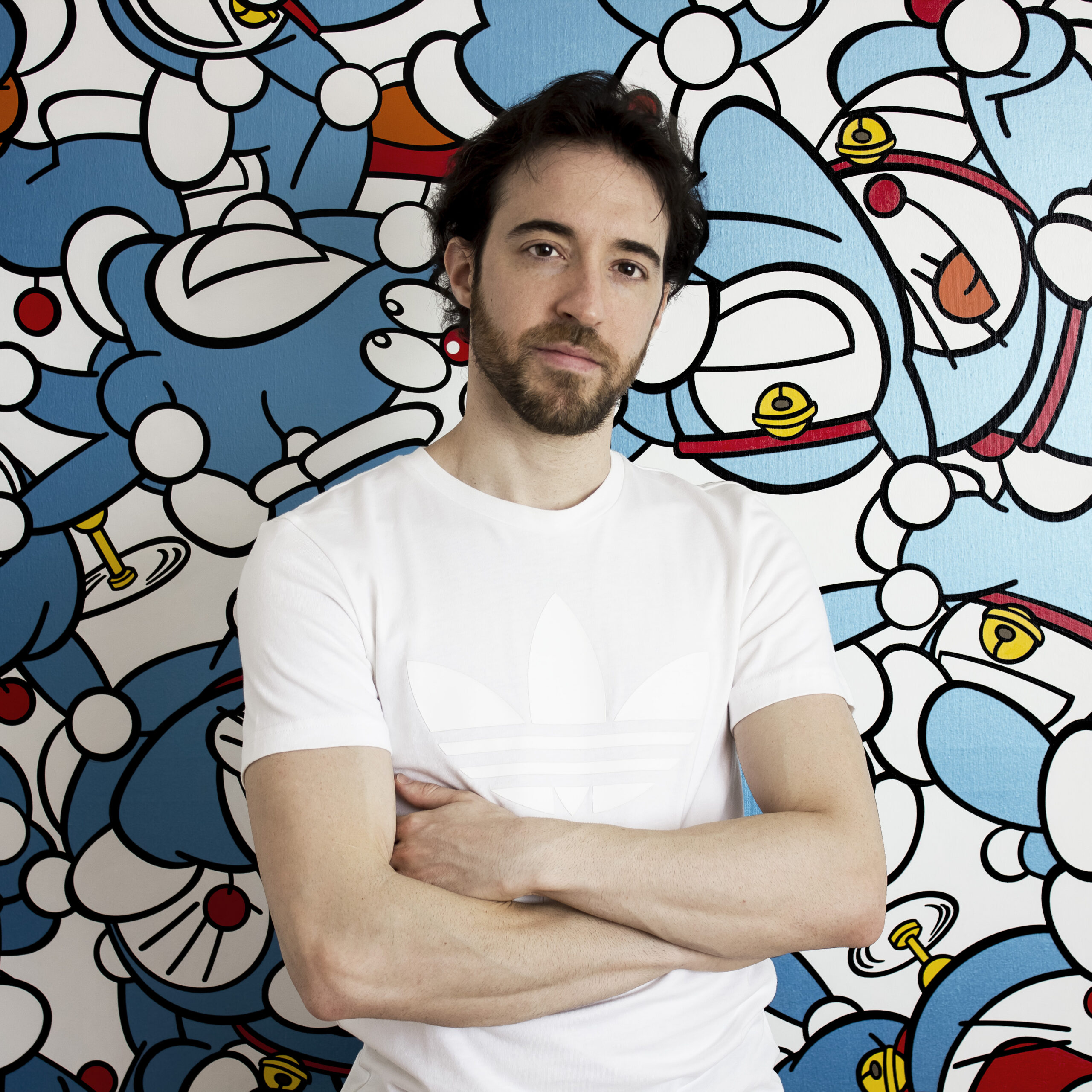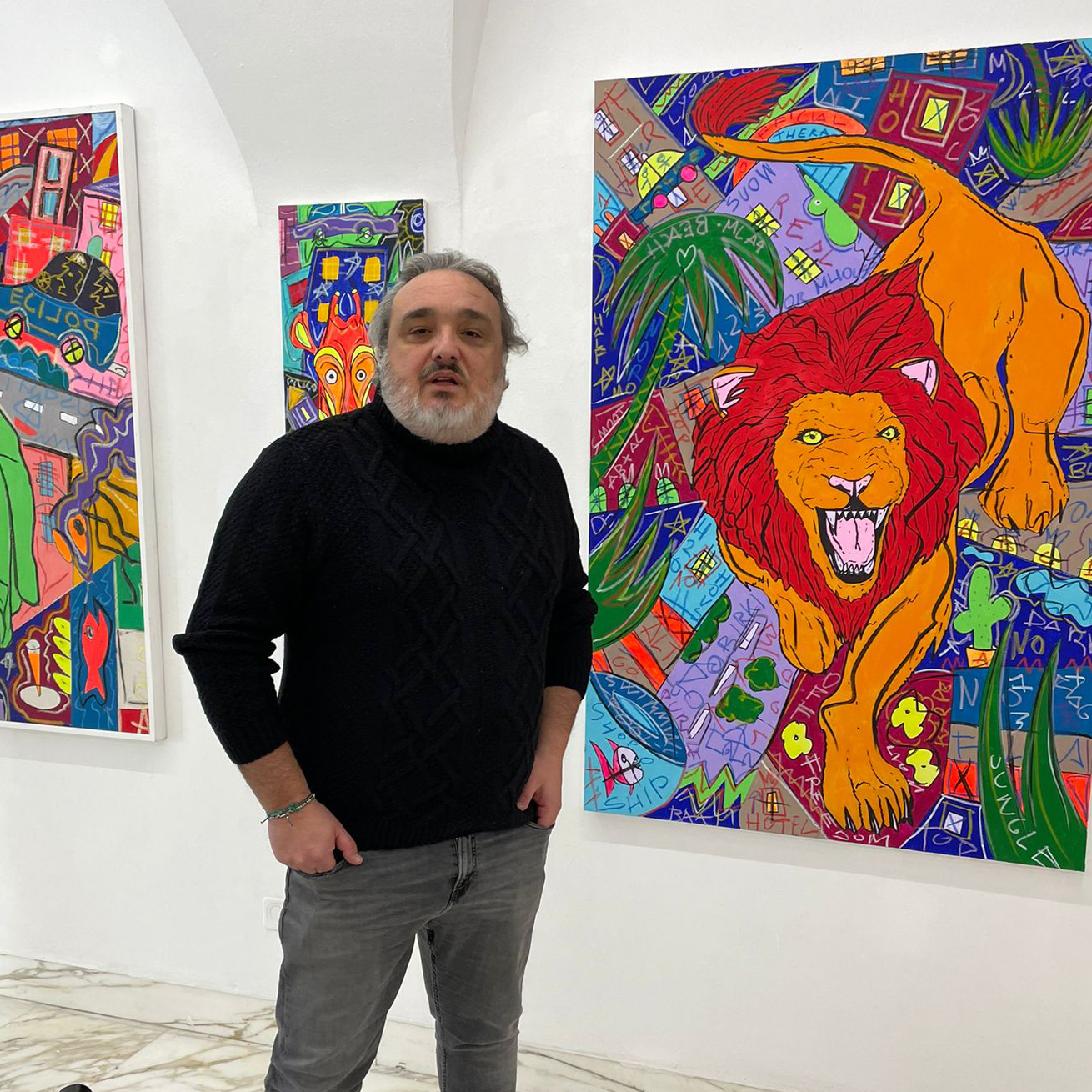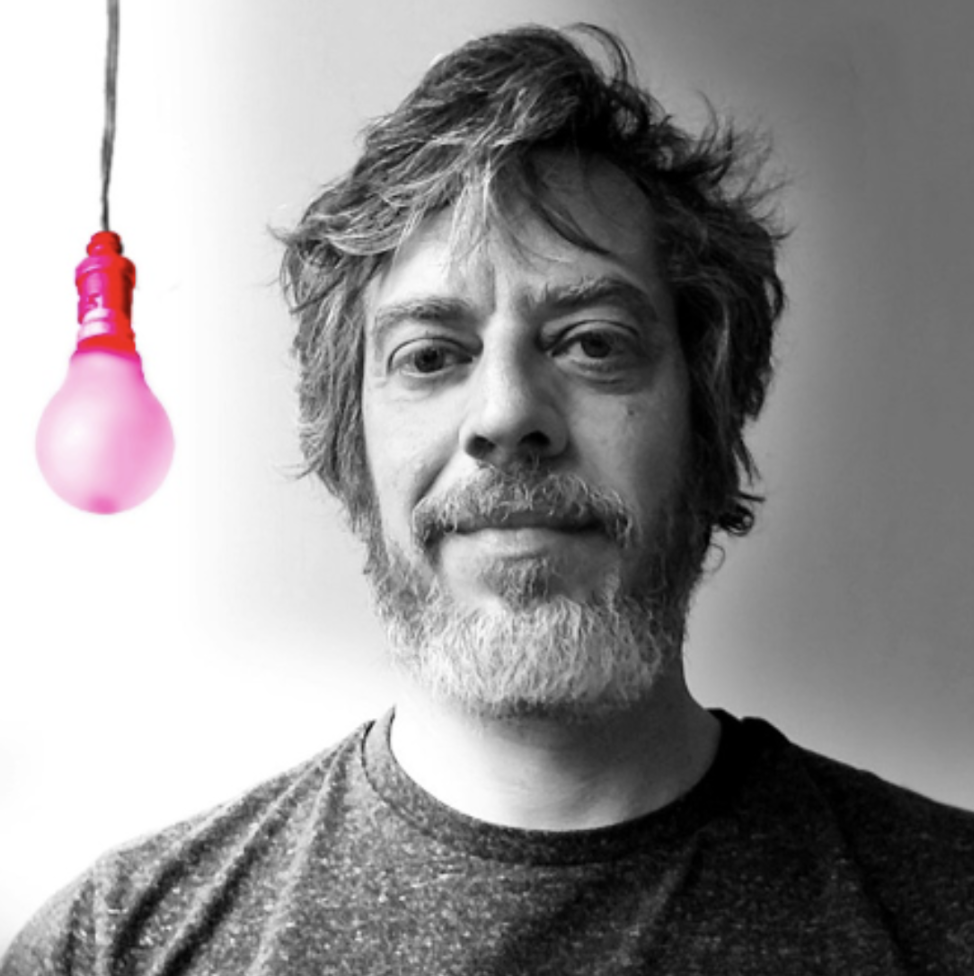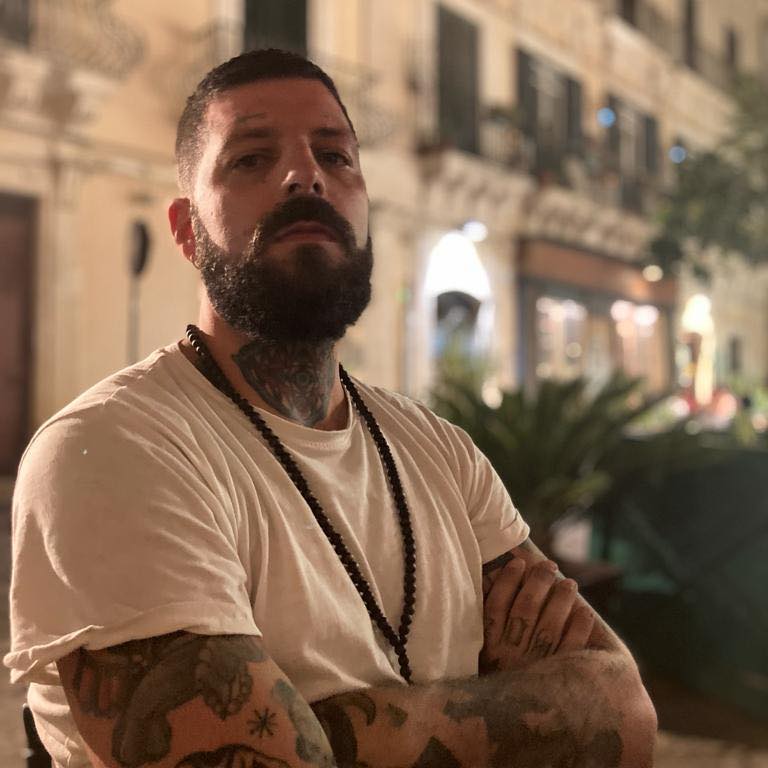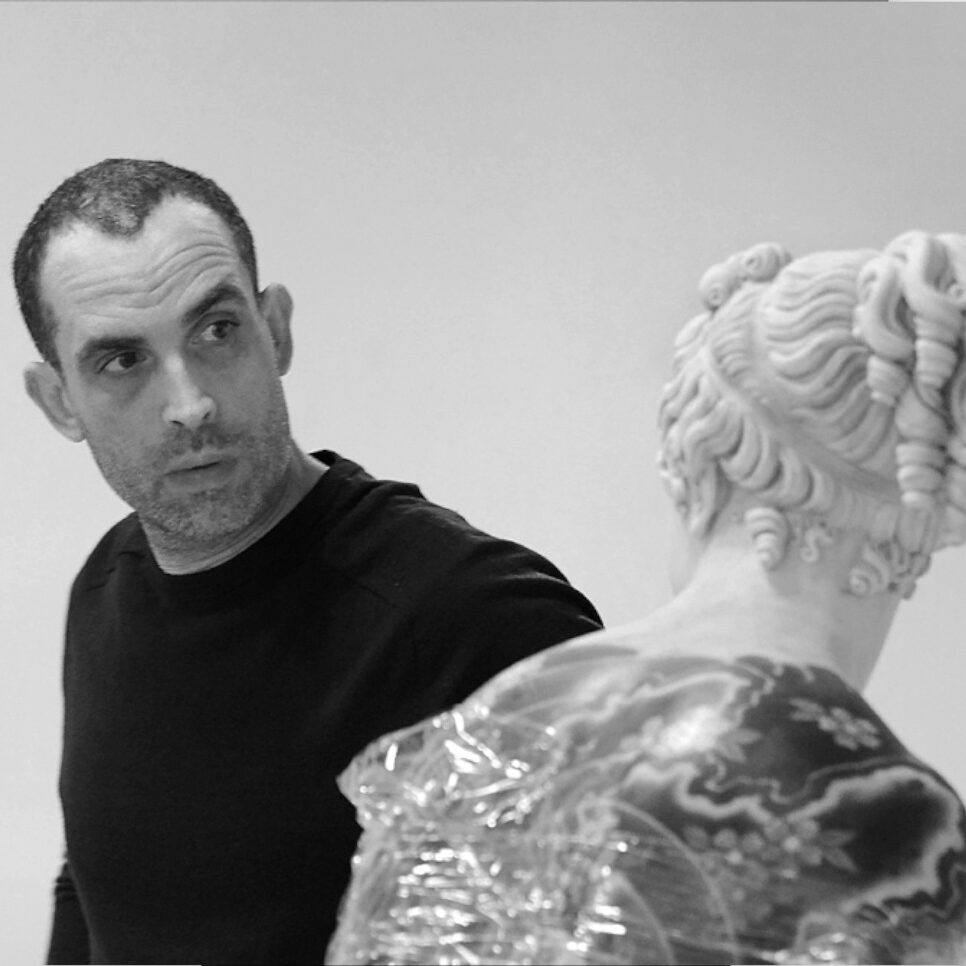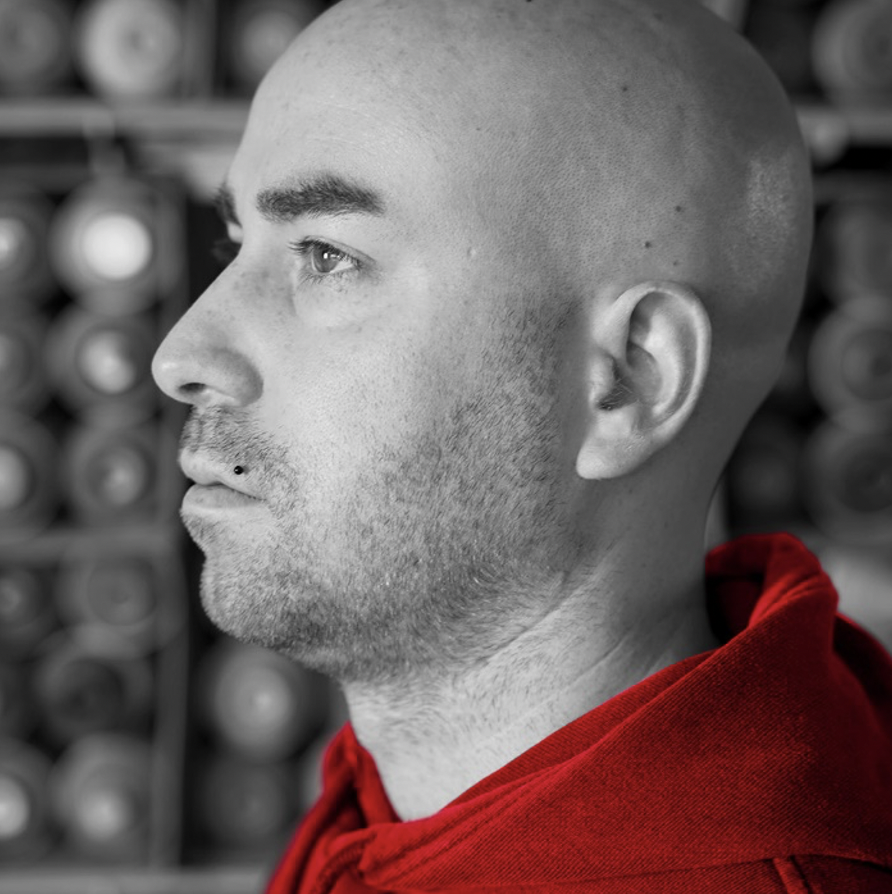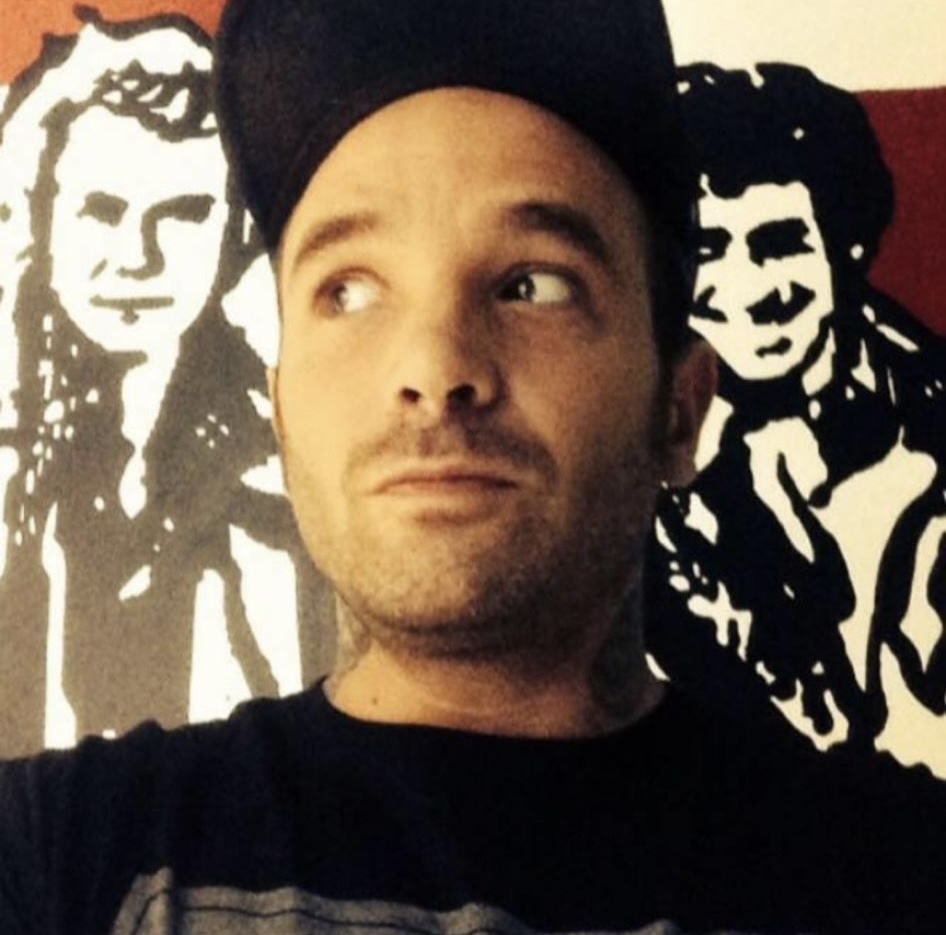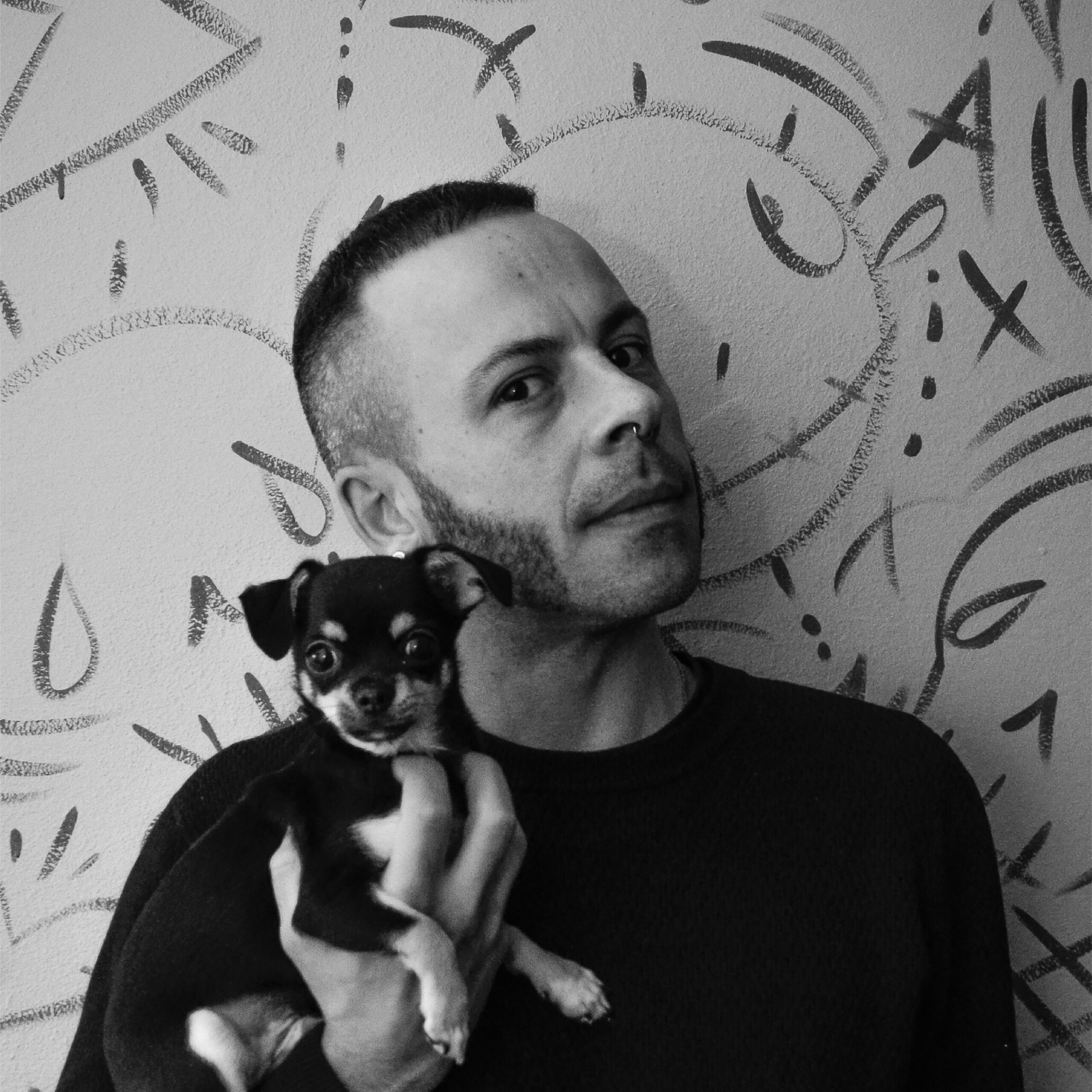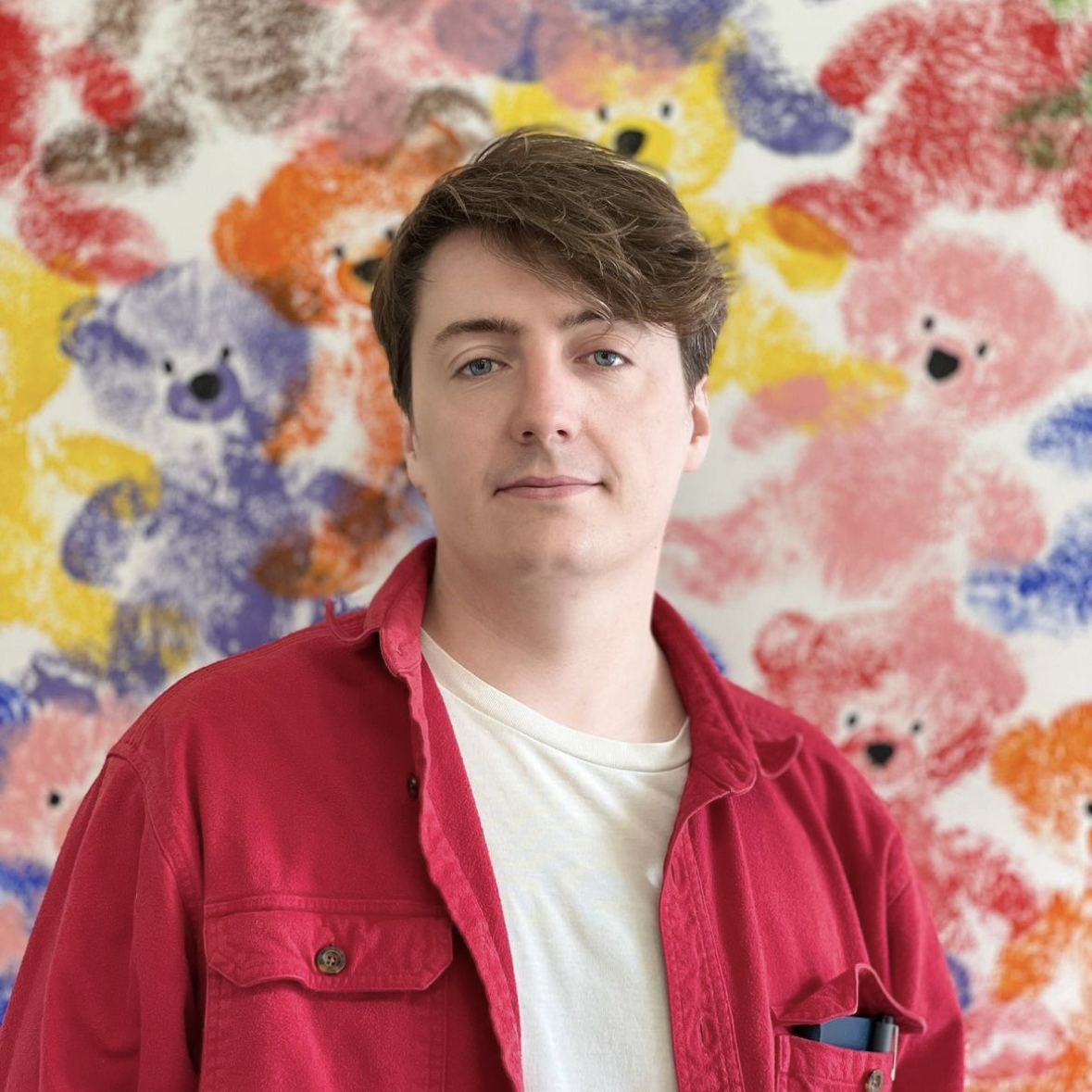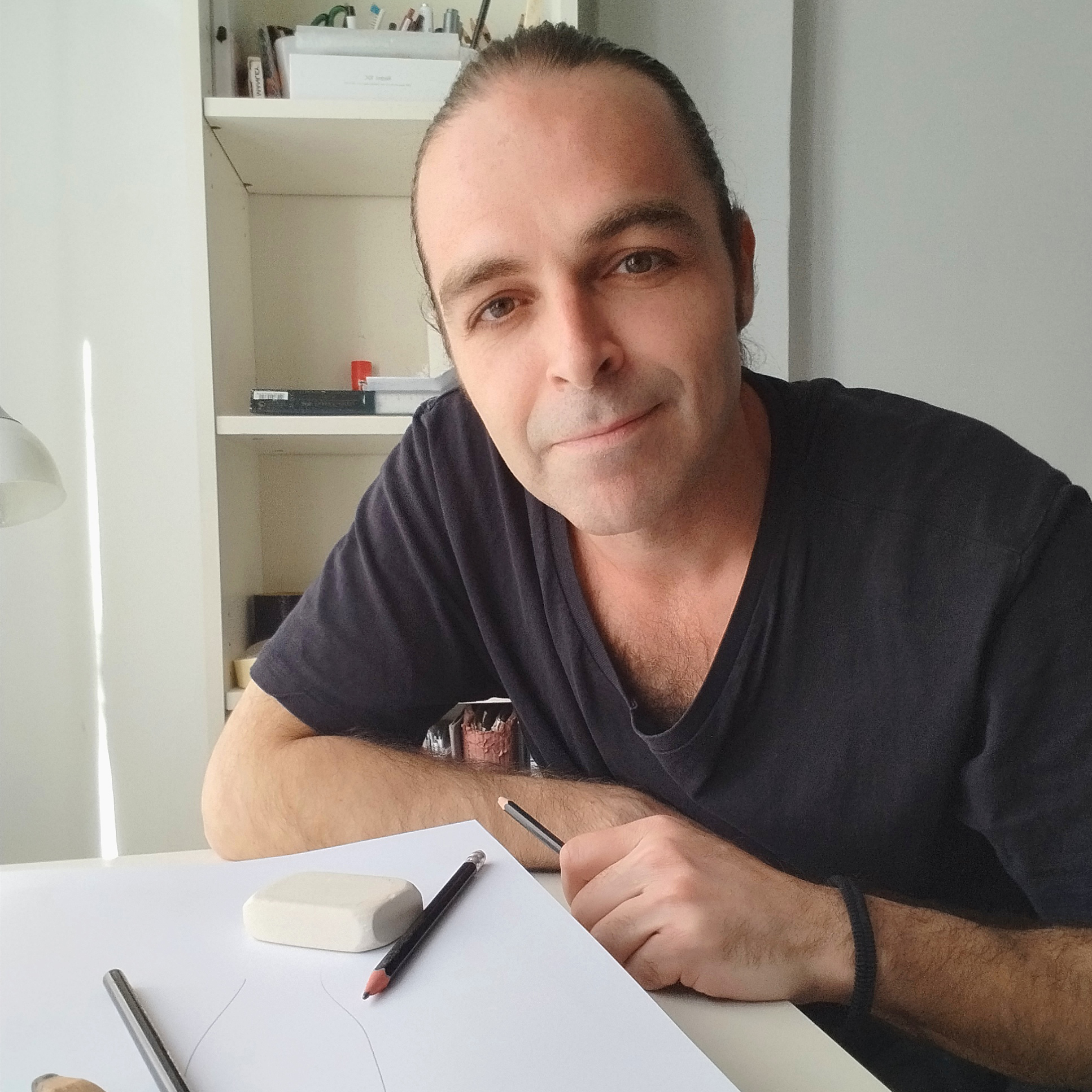
Self-taught and self-trained, Oton always has a passion for painting and drawing since childhood age, particularly keen on depicting scenes related to Madrid. Without stopping painting, he completed high school and then completed his training specializing in graphic design. With no desire to abandon his permanent dedication to painting, from a very young age he has worked in the hostelry business, doing diverse jobs such as waiter, cook, etc. A few years later he carried out various graphic design projects as a creative in the advertising field. After many years of effort, Oton eventually can dedicate himself full-time to his painting, something that he has been fighting for all his life.
In 2005, Oton opened his first individual exhibition. He painted on board and paper, where he started with painting, then followed with a processual and iconic repertoire of collages: fragments of magazines, glued to the support, are intermingled with the painting and dialogue with certain aspects of neo-dadaism, abstract expressionism, or pop-art. This first stage of Oton’s works led him to focus more on the images.
It was when Oton made collections of collages. He created more than 600 works in small format, completely excluding painting. He wanted to create conceptual works that question us about our relationship with the images of the mass media and the world of art, something that has a language of its own, critical and ironic, where humor ends up unifying the discourse, and where the smile, often present, becomes a grimace.
After some time looking away, by chance, what Oton seeks appeared from the hands of his 2-year-old nephew. With him, Oton spent time drawing and coloring children’s notebooks. It is then, Otonobserved how he had fun crossing out, blurring, or scribbling a smile on Mickey Mouse, Goofy, etc., where he realises that there is something crucial and interesting.
This is how his process begins. A playful job. A pure and innocent drawing. Where there are no rules and everything is put at the same level. A hand, an eye, a breast, an ass or a cock, they are the same. “I just draw. I give them attributes, and in the end it almost seems that they are the ones who are drawing themselves, laughing at themselves.”
It is also a fresh and spontaneous look at the sweetened and consumerist world with Disney’s signatures. They are iconic symbols of popular culture, parodied in a vulgar and scathing way, making them ironic and mocking images that make you smile. A critical look, once again asking us about our relationship with Fanzine iconography. Oton is interested in the line, the blot, the blur, the error. As necessary as the success.
As a result, gestural impulses on paper, created by using pencils, crayons, pastels, etc., enrich a lucid and acid work that does not leave you indifferent. Antics on paper, where ingenuity and irreverence are embodied with plasticity and naturalness, in a crazy and fun work.In short, it’s a child’s game.
